How Gujarat Farmers Are Using Sonpari Mango to Get 4X Yields & Move Away from Alphonso
Ever heard of Sonpari – a mango variety from Gujarat that is a royal union of Alphonso and Baneshan? While it is a mango that is made by the union of the queen of mangoes (Alphonso) and the pride of South (Baneshan), surprisingly, only a few outside the state have encountered Sonpari.
Yet, Sonpari’s story is not one of mere local fame. Its legend has sailed across oceans.
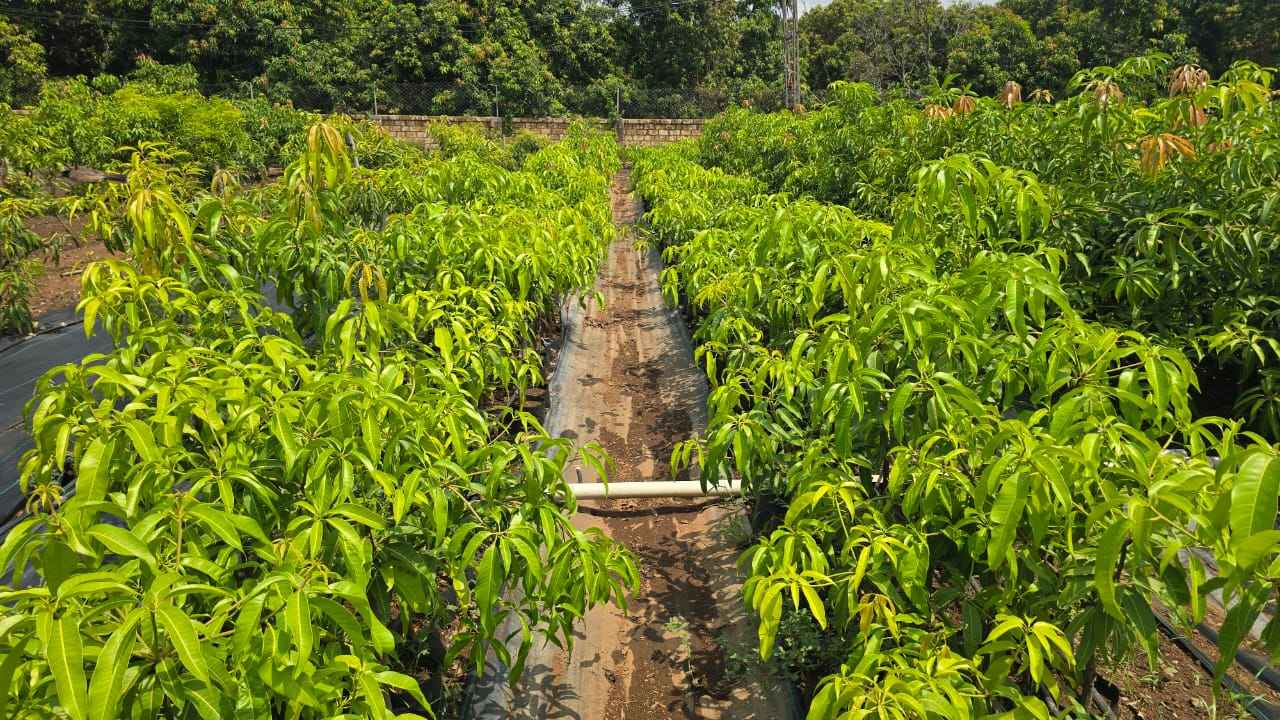 The vigorous and lush trees bear their bounty regularly, which has made Sonpari a shade better than other varieties.
The vigorous and lush trees bear their bounty regularly, which has made Sonpari a shade better than other varieties.
Dr. CK Timbadia, vice chancellor of Gujarat Natural Farming University, recalls how the diaspora in California clamours for its taste, with orders for 1,200 kg from Gujaratis settled far from home.
It was Dr. Timbadia who, in 2017, first summoned the media to witness Sonpari.
Tracing Sonpari’s roots
But what is the story behind this golden hybrid? To understand how it came to be, we need to go back a few decades. The roots of this golden marvel trace back to the Agriculture Experimental Station (AES) at Paria, now under Navsari Agricultural University. Here, Dr Rajnikant I Bhatt, a visionary horticulturist, meticulously evaluated and introduced Sonpari — christened Gujarat Mango Hybrid-1 (GMH-1) — for commercial cultivation in 2000.
The vigorous and lush trees bear their bounty regularly, which has made Sonpari a shade better than other varieties. Their fruits – oval and weighing up to 550 grams – ripen to a radiant golden yellow, and their smooth skin is adorned with distinctive brown lenticels.
But Sonpari’s allure is more than skin deep. Its flesh is firm, fibreless, and bursting with a blend of sugars and acids that evoke the legendary Alphonso, yet with its character.
Alphonso versus Sonpari
“Alphonso is plagued with major problems which the horticulturists have been unable to address — the white spongy tissues in the fruit, its extreme sensitivity to vagaries of weather, and bearing fruit in alternate years. However, Sonpari overcomes all these problems and yet looks and tastes like Alphonso,” says Bhaktesh Thakar, a 59-year-old farmer who has 4,500 Sonparis thriving on his farm in Fansa village of Umargam taluka, 45 km from Valsad.
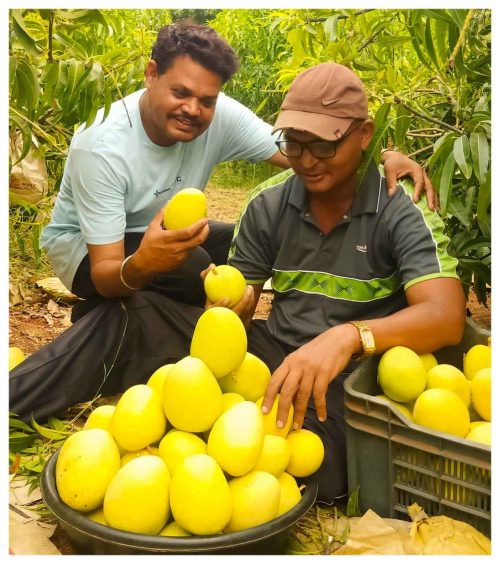 Sonpari’s firm, fibreless flesh offers a sweet-tangy taste, like Alphonso but with its own twist.
Sonpari’s firm, fibreless flesh offers a sweet-tangy taste, like Alphonso but with its own twist.
Beyond its Alphonso-like appeal, Sonpari also boasts impressive resilience. Free from the spongy tissue disorder and resistant to pests and diseases, it stands as a testament to both nature’s artistry and scientific ingenuity.
Its keeping quality is exceptional — fruits remain fresh for over ten days at room temperature, making it a darling of exporters and local markets alike.
In the heart of Gujarat, Sonpari is not just a fruit — it is a phenomenon.
Farmers, who were battered by erratic weather and those looking for profits, are turning to this golden hybrid in droves. Sonpari has become the preferred variety in South Gujarat, particularly in and around the districts of Navsari, Valsad, Junagadh, and Gir-Somnath, scoring over Kesar and Malgova.
As word spread beyond Gujarat’s borders, a quiet transformation began unfolding across state lines. Sonpari has slowly made its way into Maharashtra, primarily through the efforts of individual enthusiasts and select nurseries. It is still rare in the region and not widely available in markets.
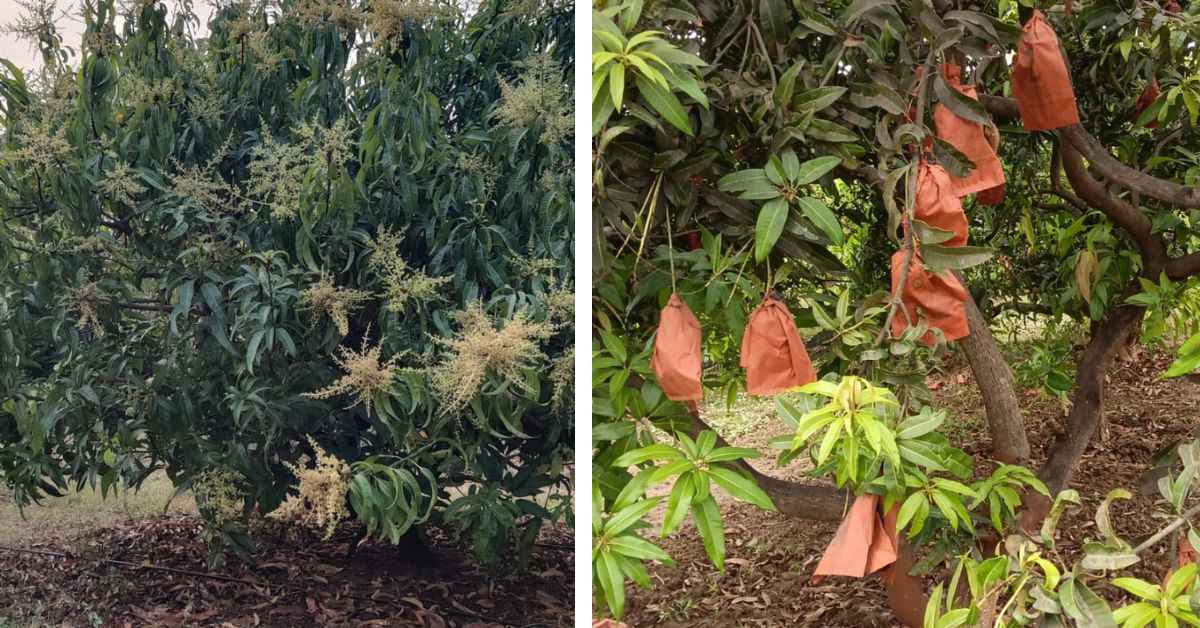 Its keeping quality is exceptional — fruits remain fresh for over ten days at room temperature, making it a darling of exporters and local markets alike.
Its keeping quality is exceptional — fruits remain fresh for over ten days at room temperature, making it a darling of exporters and local markets alike.
In Maharashtra, some growers, such as Janardan Waghere in Nashik, have adopted the variety and reported excellent results, with higher initial yields compared to Alphonso. In 2025, being the third year, Sonpari has given a 20 kg per tree yield, versus Alphonso’s, which has given a five kg yield per tree.
Interestingly, despite growing demand, Sonpari’s cultivation remains largely confined to Gujarat — because state-run Agriculture Research Stations restrict sapling sales to Gujarat-based farmers via online registration for the benefit of state farmers.
“In 2024, we distributed 5,000 plants and plan to give 8,000 plants this year,” says Dr Chirag Patel, associate research scientist (Horticulture) at Pariya Research Centre. “The demand is much more than we can meet, and this is met by private nurseries,” he adds.
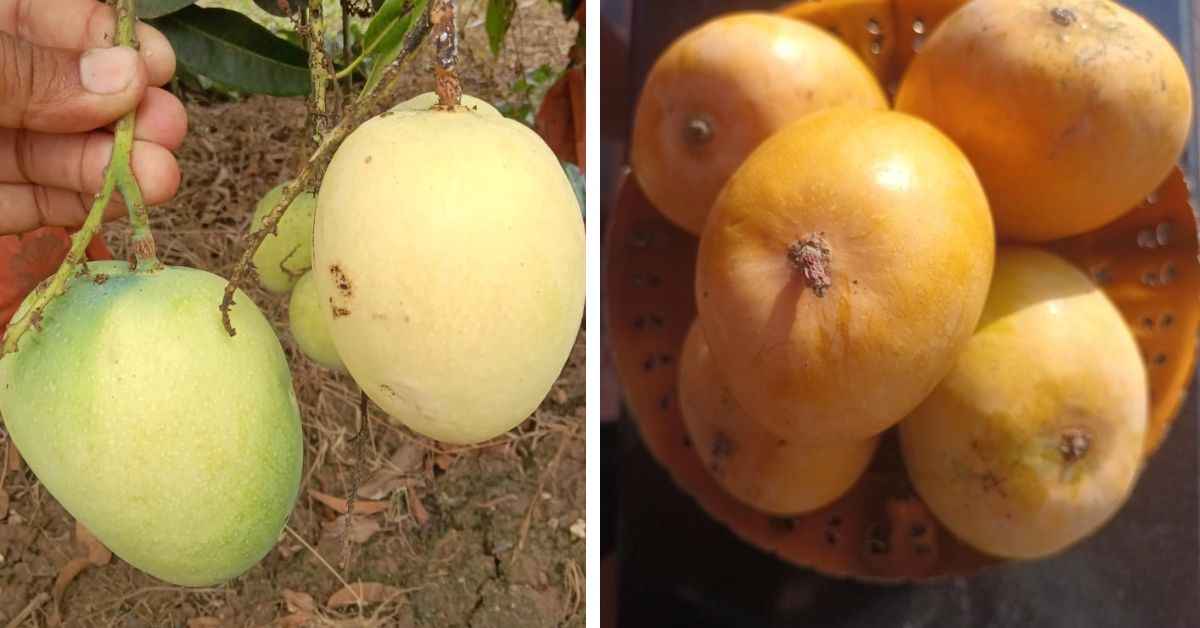 Interestingly, despite growing demand, Sonpari’s cultivation remains largely confined to Gujarat.
Interestingly, despite growing demand, Sonpari’s cultivation remains largely confined to Gujarat.
Among the private players helping bridge the gap is Sumeet Samsudin Jhariya, who has received the IARI Innovative Farmer award. He operates ‘Anil Mango Farms and Nursery’, a 12-acre enterprise located in Bhalchel village, Junagadh, near Gir National Park.
The 32-year-old biotechnology post-graduate states, “I maintain 600 Sonpari mother plants and, over the past two years, have sold 15,000 saplings, with prices ranging from Rs 250 to Rs 400 per plant depending on the size and order quantity.”
Will Sonpari replace Kesar?
Farmers and experts believe Sonpari will replace a significant portion of Kesar orchards within five years due to its export potential and consumer appeal.
The fruits mature in the second week of June and last longer than Kesar and Alphonso, as even after 14 days, it does not rot.
The trees are free from mango malformation, shoot borer, and mealybug. The fruit’s skin is thin and hence preferred by the fruit fly to lay eggs, which growers take care of by installing pheromone traps.
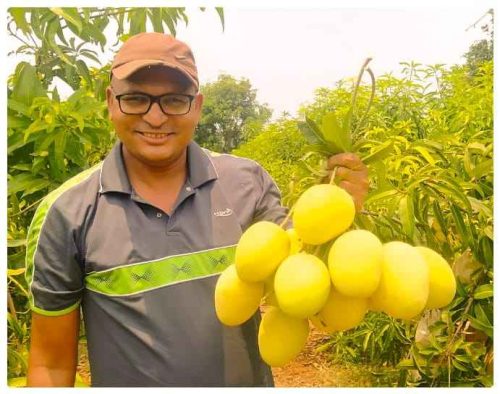 The fruits mature in the second week of June and last longer than Kesar and Alphonso, as even after 14 days, it does not rot.
The fruits mature in the second week of June and last longer than Kesar and Alphonso, as even after 14 days, it does not rot.
According to Jigar Desai, who planted 1,000 Sonparis and followed it up with another 3,000, spread on three hectares on his farm in Valod, Surat, Sonpari is more resilient to storms and strong winds.
“During Cyclone Tauktae in May 2021, which flattened hubs of kesar mango production, especially in Saurashtra and South Gujarat, many mangoes that were ready for harvest were destroyed. However, this was not the case with Sonpari orchards,” he explains.
Farmers who were hesitant to plant Sonpari mango trees have rushed to nurseries to obtain seedlings since Cyclone Tauktae hit, spending up to Rs 600 for a sapling that was a year-and-a-half-old.
A 69-year-old Pramodbhai from the village of Abrama in Jalalpat taluka in the Navsari sold a 20kg box for Rs 5,000, demonstrating that people who planted Sonparis in the early years are receiving rewards.
Edited by Vidya Gowri Venkatesh
News